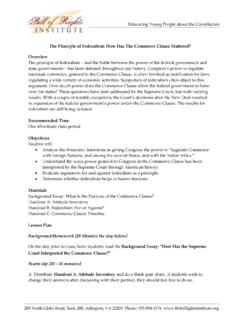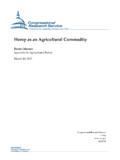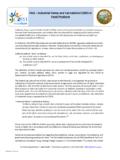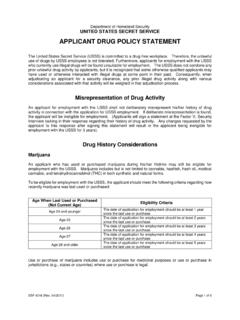Transcription of Tips & Tools #18: Coding Qualitative Data
1 1 Tips & Tools #18: Coding Qualitative Data This tip sheet provides an overview of the process of Coding Qualitative data, which is an important part of developing and refining interpretations in your interview, focus group or observational data. We begin with an overview of Coding , and then the various aspects of Coding are discussed. We also provide a sample interview transcript with codes and marginal remarks. What Is Coding ? Coding is the process of organizing and sorting your data.
2 Codes serve as a way to label, compile and organize your data. They also allow you to summarize and synthesize what is happening in your data. In linking data collection and interpreting the data, Coding becomes the basis for developing the analysis. It is generally understood, then, that Coding is analysis. Before we jump into the process of Coding data, it is important to think about the big picture. One of the keys in Coding your data, and in conducting a Qualitative analysis more generally, is developing a storyline.
3 Essentially, this element is primary to analyzing your data. This is the reason that thinking about the purpose of your evaluation before, during and after data collection is so critical. In thinking about it another way, the purpose of the study is your storyline and it is the analytic thread that unites and integrates the major themes of your evaluation. In this manner, it is the answer to the question: What is this evaluation about? Creating a Storyline The best way to develop your storyline is to write down a sentence or short paragraph that describes your evaluation in general terms.
4 For instance, if you are interviewing multi-unit housing (MUH) owners and landlords concerning a potential smoke-free MUH policy, what are you trying to find out, and what do you want to convey with this information? Your Coding scheme should be based on the story that you want to communicate to others. Many people start Coding data without any idea of what they will end up writing or how they will write their evaluation, and as a result their Coding scheme lacks coherence. In this case, Coding becomes a waste of time.
5 This is why end-use strategizing thinking about the purpose of your study before you begin is so important and a critical first step (see Tips and Tools #16(a) Analyzing Qualitative Data for more on end-use strategizing) in conducting all evaluations, and in this case, completing the Coding process. 2 Why is developing a storyline so important to the Coding process? It will help you decide what concepts and themes you want to communicate in your evaluation. It guides you in how your data should be organized and coded.
6 It gives you the basic structure for your Coding scheme. Code Your Data Coding can be done in any number of ways, but it usually involves assigning a word, phrase, number or symbol to each Coding category. You will go through all your textual data (interview transcripts, direct notes, field observations, etc.) in a systematic way. The ideas, concepts and themes are coded to fit the categories. Creating Codes The process of creating codes can be both pre-set and open. We recommend a hybrid, using both these two models.
7 Before beginning data collection and the Coding process, it is good to begin with a start list of pre-set codes (often referred to as a priori codes ). These initial codes derive from the conceptual framework, list of research questions, problem areas, etc. Your prior knowledge of the subject matter and your subject expertise will also help you create these codes. For instance, if you are interviewing MUH owners and managers, you may already think about the codes economic issues or tenant smoking or common areas (the list could go on and on.)
8 At a later time, the codes economic issues and tenant smoking may be collapsed into a larger code or theme of barriers to policy. Pre-Set Codes A pre-set list can have as little as 10 codes or up to 40-50 codes. We recommend not creating too many codes because the person Coding can become overwhelmed or make mistakes in the Coding process if there are too many. In creating these codes, it is important to create a code book, which is list of the codes and what they mean. Emergent Codes While it is good to begin data collection and Coding with pre-set codes, another set of codes will emerge from reading and analyzing the data.
9 These emergent codes are those ideas, concepts, actions, relationships, meanings, etc. that come up in the data and are different than the pre-set codes. For instance, in the aforementioned example of interviews of MUH owners and managers, the issue of tenants smoking medicinal marijuana may have come up. This may be seen as a tricky legal issue by the owners and managers. It may have been something not coded before data collection and Coding began. So, the text discussing this issue could be 3 coded as legal issue (which was probably identified as a start code) and medicinal marijuana .
10 Because there s a good chance that medicinal marijuana was not a start code, it is added to the code book as an emergent code. In many cases, the surprise emergent codes form the basis of interesting stories and may indeed become part of the major storyline told in your evaluation. Coding as a System of Organizing Your Data One easy way to think about Coding is to see it as a system to organize your data. In essence, it is a personal filing system. You place data in the code just as you would file something in a folder.







